Willowherbs: [Cultivation, Irrigation, Care, Pests and Diseases]
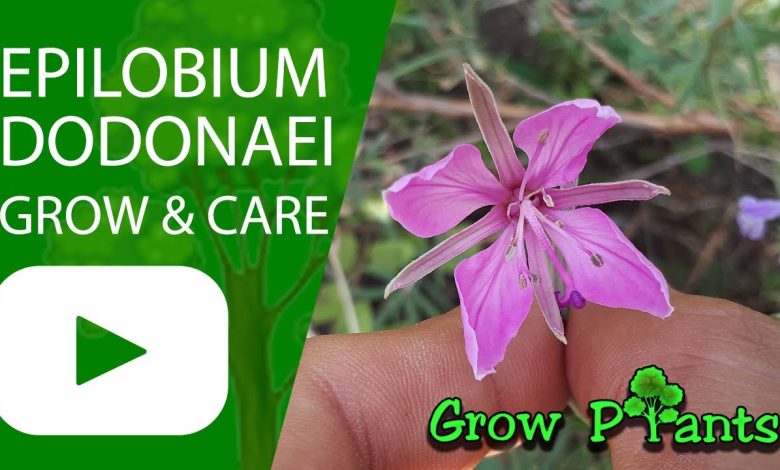
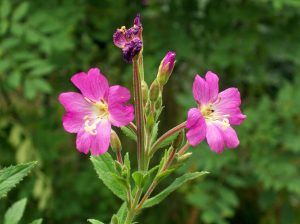 Epilobium hirsutum is a species that lives in the temperate areas of Europe, Asia and some regions of Africa, but has been introduced in other parts of the world, such as North America.
Epilobium hirsutum is a species that lives in the temperate areas of Europe, Asia and some regions of Africa, but has been introduced in other parts of the world, such as North America.
It is characterized by the fine and soft hairs that cover the plant. However, it is an aggressive plant that spreads quickly, becoming a threat to other species.
Also called rosadelfilla, it is used for medicinal purposes to treat the flu, as a remedy for respiratory and skin problems, as well as to treat wounds and superficial ulcers.
Important points when planting a willowherb:
- Scientific name: Epilobium hirsutum.
- Common name: Hairy willowherb, San Antonio carnations, San Antonio herb, San Antonio laurel, rosadelfilla, fireweed.
- Height: 1.50 meters.
- Light requirement: Direct light and partial shade.
- Temperature: Temperate and cold climates.
- Irrigation: Intermediate.
- Fertilizer: Organic.
What characteristics does willowherb have?
Willowherb is a perennial herb that can grow up to 1.5 meters in height and is characterized by fine tector hairs everywhere. Lateral shoots are born from its stem that are fixed in the ground by anchoring or adventitious roots.
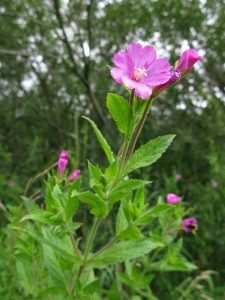 Its leaves are opposite, but alternate in the area of the clusters, toothed, semi-amplexicaul and densely hairy. Willowherb flowers have a regular purple -pink corolla.
Its leaves are opposite, but alternate in the area of the clusters, toothed, semi-amplexicaul and densely hairy. Willowherb flowers have a regular purple -pink corolla.
They bloom during the months of July and August. They measure between 2 and 3 centimeters wide and are grouped in clusters of 10 to 22 flowers each. The fruit of this plant is a capsule that is 6 to 9 centimeters long.
Inside there are 4 compartments in which they house small dark brown obovoid seeds. In turn, the seeds sprout silky filaments that allow them to be dispersed by the wind.
When to sow willowherb?
Willowherb seeds have no dormancy, but lose their viability after 18 to 24 months. They germinate in spring under natural conditions such as rainy seasons and warm temperatures. If the cultivation is done by division, it will be more appropriate to do it during spring and autumn.
Where to plant willowherb?
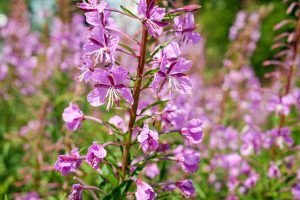 Willowherb is a plant that tends to form dense populations in streams and near places with moisture. It tends to multiply in places with short, hot summers and long, cold winters.
Willowherb is a plant that tends to form dense populations in streams and near places with moisture. It tends to multiply in places with short, hot summers and long, cold winters.
The most suitable soils for planting willowherb are sandy, light, clayey and basic, with a pH of 5.5 to 8, where the plant can receive direct sunlight.
How to prepare the land?
Willowherb can be grown in any type of soil as long as it is well drained but capable of retaining moisture. However, germination improves when the soil is nourished and its acidity is reduced.

If the substrate is clayey or has a poor capacity to drain water, you can mix the soil from the garden with 20% perlite.

How do we water the willowherb?
By nature, willowherb grows in wetland areas. In fact, specialists have classified it as a semi-aquatic plant, with tolerance to waterlogging and flooding. However, such conditions reduce plant growth.
Due to the above, it is preferable to water moderately to maintain the willowherb substrate with constant humidity, avoiding waterlogging.
How often do we water the willowherb?
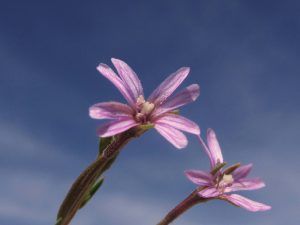 After the plant has been transplanted, it should be watered a couple of days a week or more, as the substrate requires.
After the plant has been transplanted, it should be watered a couple of days a week or more, as the substrate requires.
Once the plant is established, watering can be reduced to once a week.
However, pay attention to the level of soil moisture during the summer and water the plant frequently so that the substrate does not dry out.
How to plant a willowherb step by step?
Although the seed production of willowherb is extremely high, some 80,000 seeds per year, its reproduction is mainly through vegetative means.
However, it is possible to grow willowherb effectively from seed as well as cuttings. Below are the steps to grow them in these two ways.
by seed
- In a seedbed with moist substrate, place a couple of willowherb seeds 3 millimeters deep and moisten with a spray bottle.
- Cover the seedbed with glass and place it outside, against a north-facing wall.
- Generally the seeds begin to germinate after 6 or 10 days.
- Once the seedlings sprout, let them grow for 6 to 7 weeks, until the willowherb has at least 2 pairs of true leaves or is about 4 inches tall.
- Transplant the willowherb to a sunny or semi-shaded area, leaving a space of 30 to 60 centimeters between them.
- Water moderately but frequently.
by cutting
- Take a section of the willowherb roots that measures 5 to 10 centimeters.
- Transplant to the desired place, 5 centimeters deep and cover it with soil by 1 or 2 centimeters.
- Keep the substrate moist until shoots appear.
What care does willowherb need?
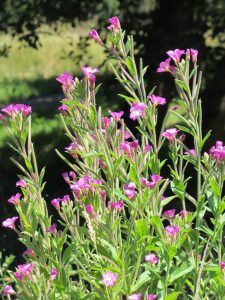 Although not required, willowherb can grow better if you apply organic fertilizer fortnightly during the hot season, which can start in spring and end in late summer.
Although not required, willowherb can grow better if you apply organic fertilizer fortnightly during the hot season, which can start in spring and end in late summer.
It is important to note that willowherb spreads rapidly. To prevent the plant from spreading throughout the garden, even to neighboring areas, it is recommended to cut the flowers after the flowering time and remove the roots and rhizomes from the soil.
Although it is often used as an ornamental plant, in some parts of the world willowherb has been classified as a noxious weed and regulations have been imposed to maintain its control. It is advisable to check the local regulations for the cultivation of this plant.
What pests and diseases affect willowherb?
Willowherb is a plant that is rarely affected by pests or diseases. However, species of the Pucciniastrum genus have been found in it, such as Fuschia rust (Pucciniastrum epilobii), as well as pathogens such as Seimatosporium, among others.
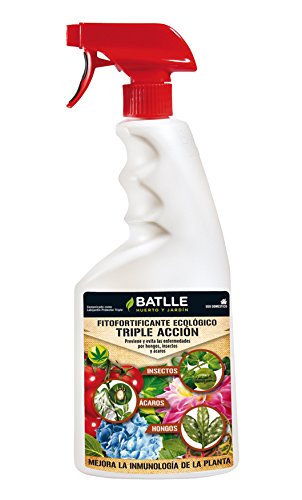
References
- https://bibdigital.rjb.csic.es/medias/f9/86/3a/e2/f9863ae2-f845-454c-98c8-71cba67f2382/files/Fl_Iber8.pdf
- https://www.academia.edu/37184980/Primer_registro_de_Epilobium_hirsutum_Onagraceae_para_la_Flora_Argentina
- http://www.juntadeandalucia.es/medioambiente/portal_web/web/temas_ambientales/biodiversidad/5_red_centros/2_red_jardines_botanicos/00_jardines/07_hoya_pedraza/planta_mes_hoya_pedraza/HOYA_PEDRAZA_SEP_2020.pdf
- http://www.floraiberica.es/floraiberica/texto/pdfs/08_097_03%20Epilobium.pdf
- http://acorral.es/malpiweb/florayfauna/adelfillapelosa.html
- https://www.gardenershq.com/Epilobium-French-Willow.php
- https://www.nwcb.wa.gov/images/weeds/Profile_hairy-willlow-herb_IPM_2010.pdf
- https://depts.washington.edu/propplnt/Plants/epilobium.htm
- http://intranet.comunidadandina.org/Documentos/Consultorias/Con7202.pdf

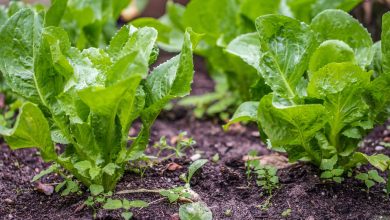
![Photo of Ghost Pepper: [Characteristics, Cultivation, Care and Disadvantages]](https://www.complete-gardening.com/wp-content/uploads/2022/08/ghost-pepper-characteristics-cultivation-care-and-disadvantages-390x220.jpg)
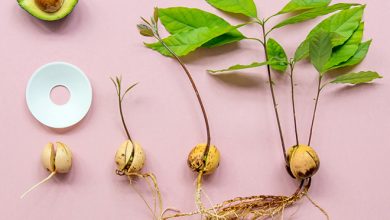
![Photo of Queen’s Earrings: [Care, Planting, Irrigation, Substrate and Pests]](https://www.complete-gardening.com/wp-content/uploads/2022/08/queens-earrings-care-planting-irrigation-substrate-and-pests-390x220.jpg)